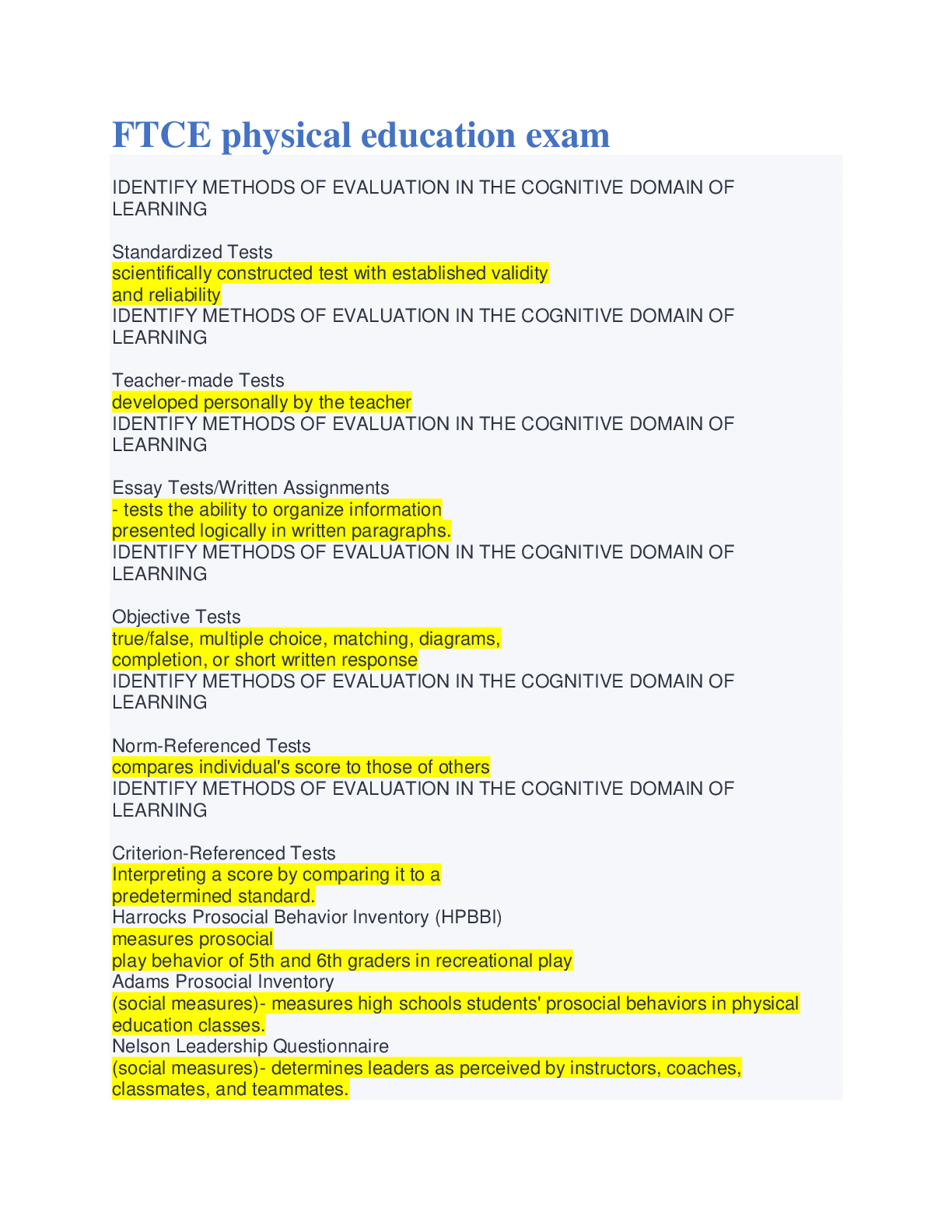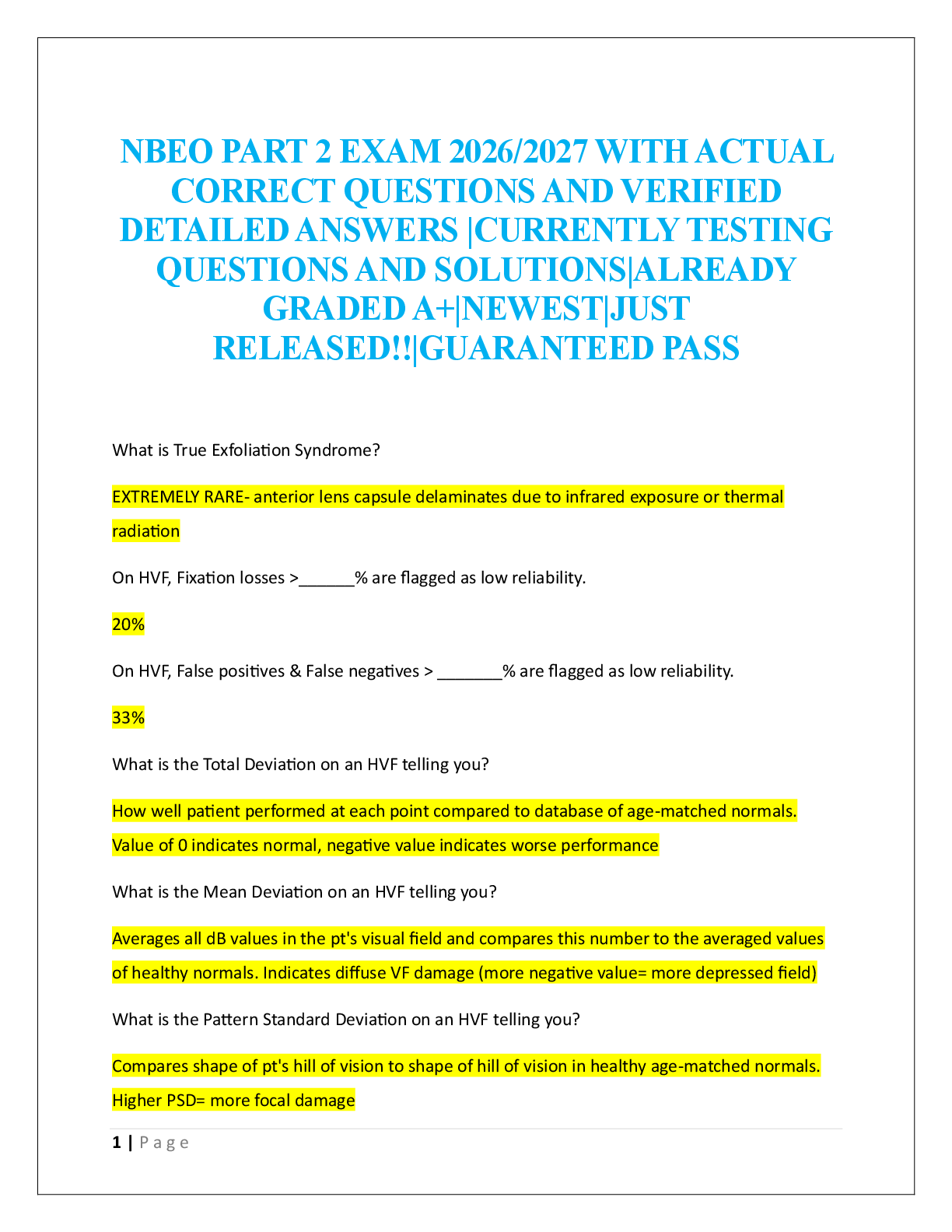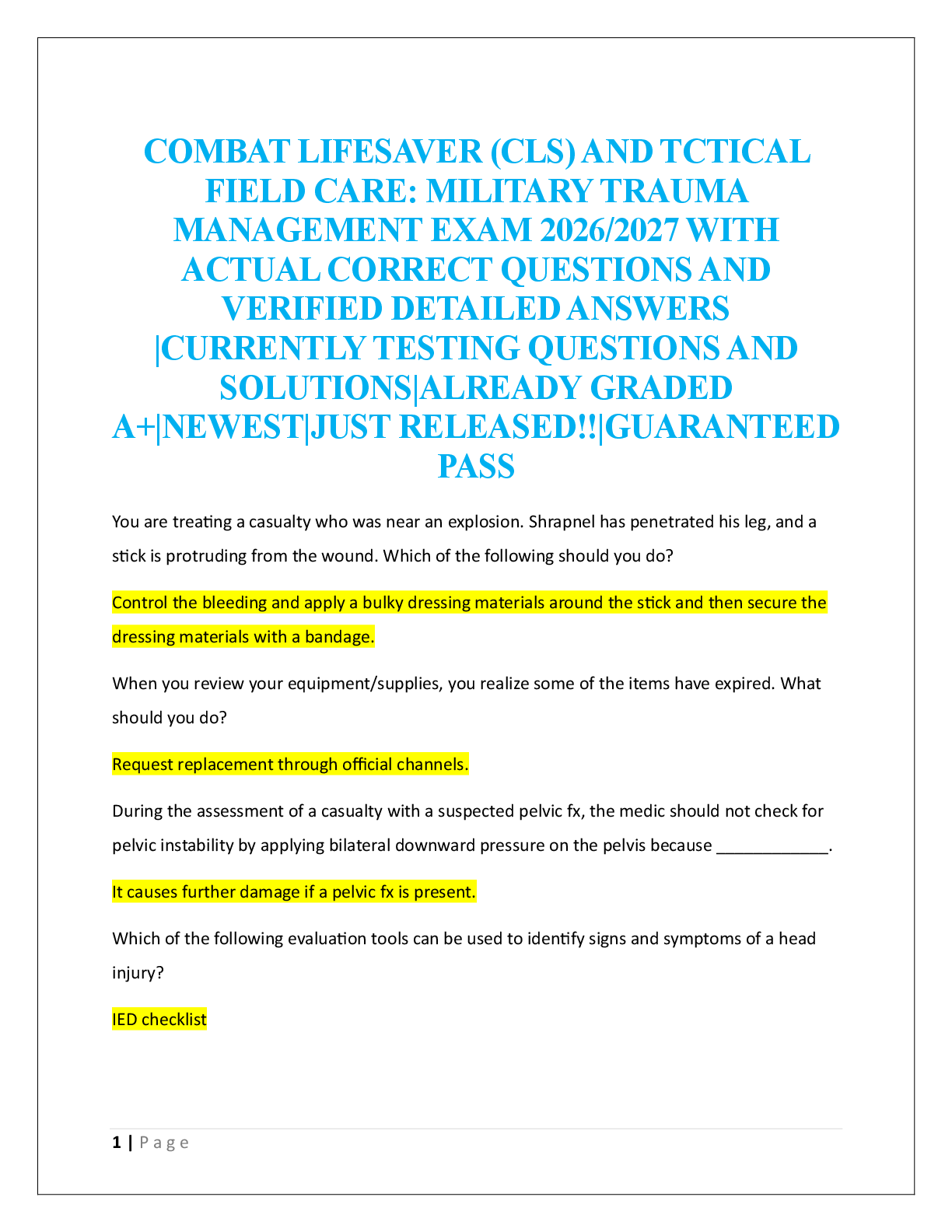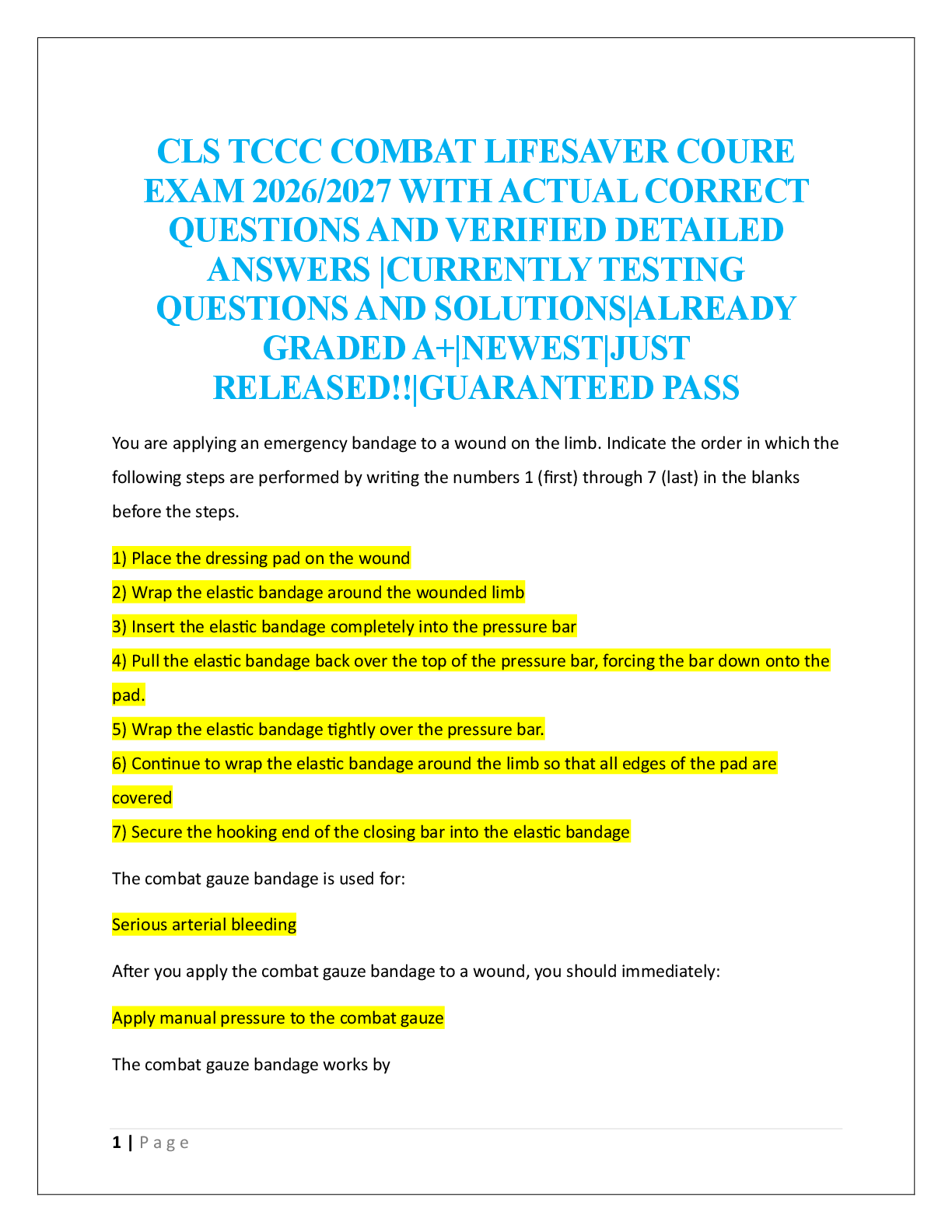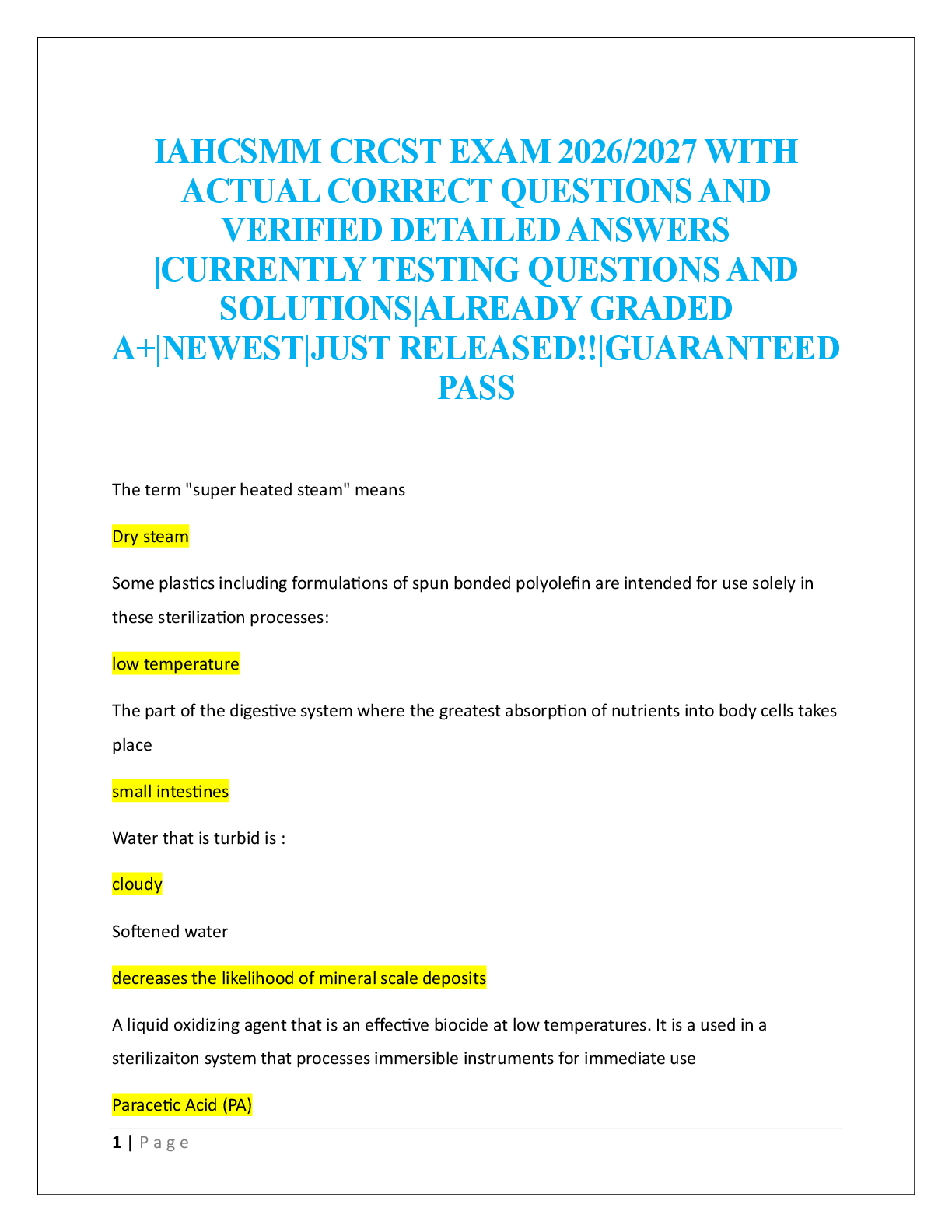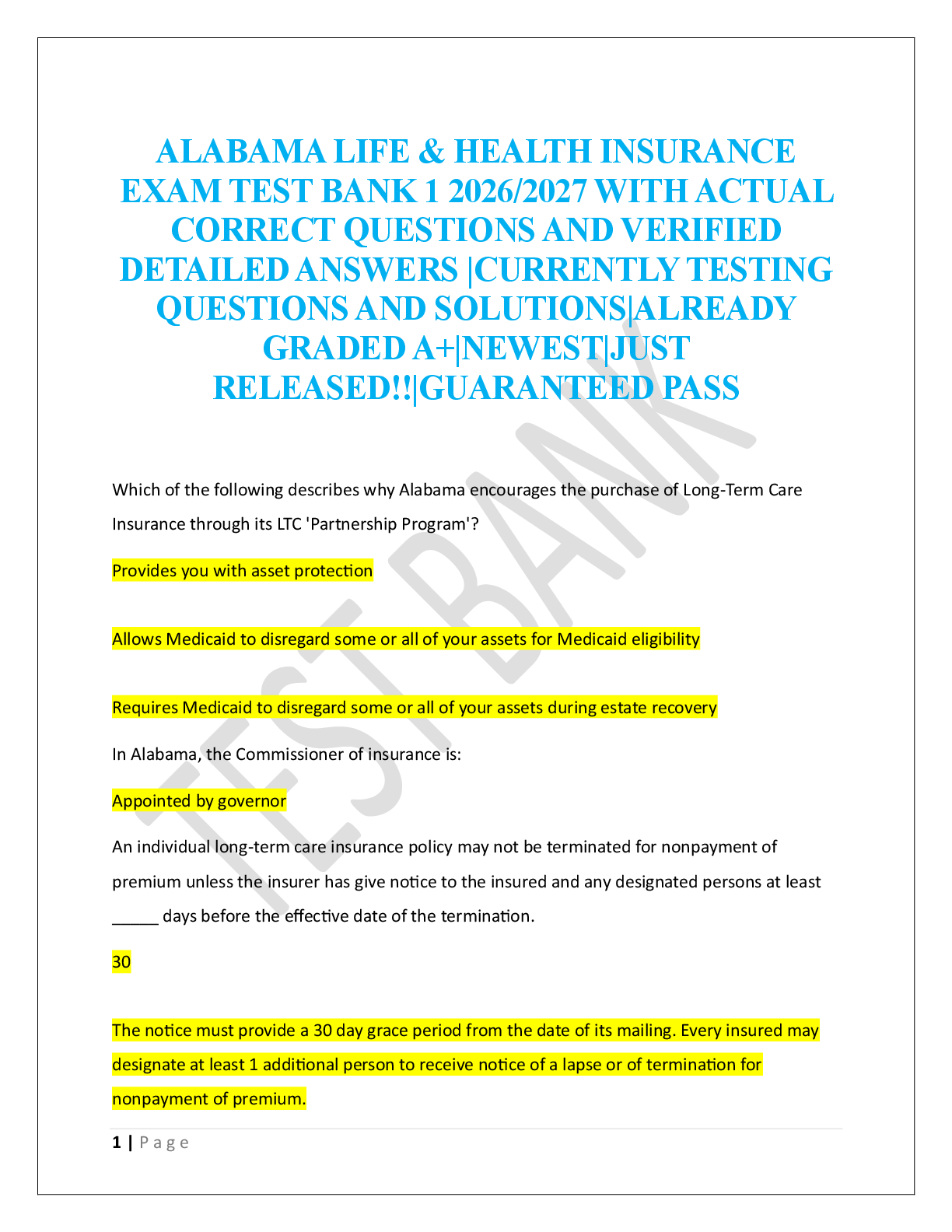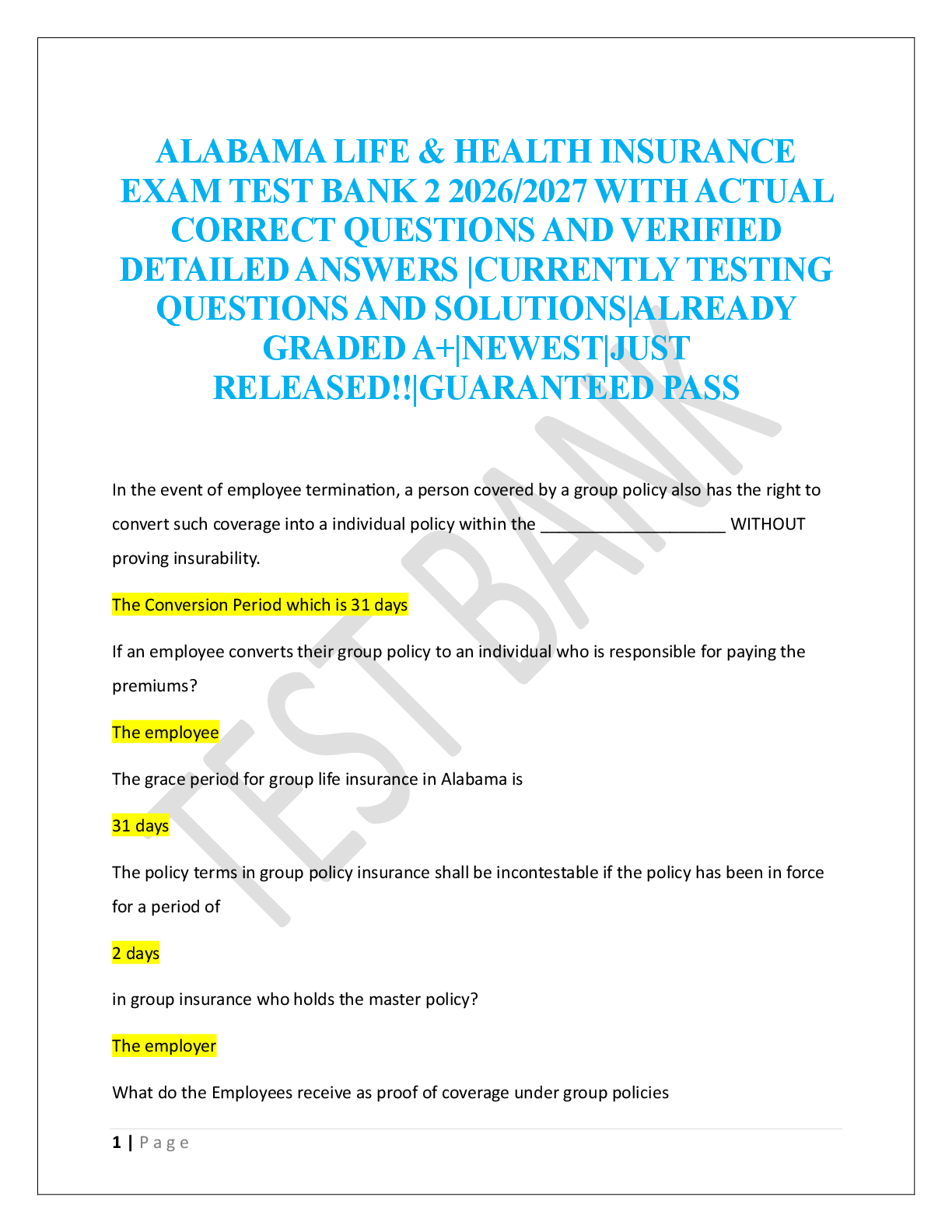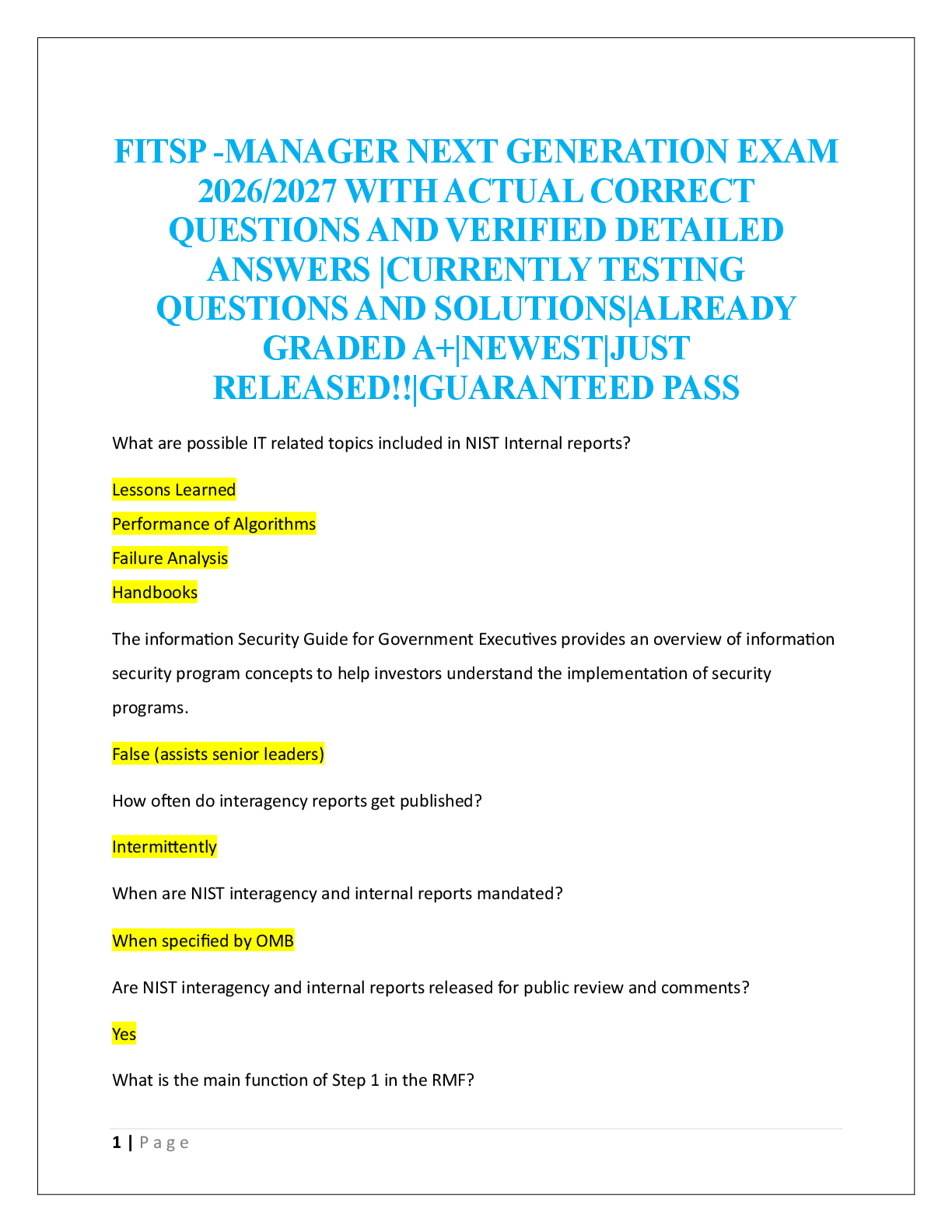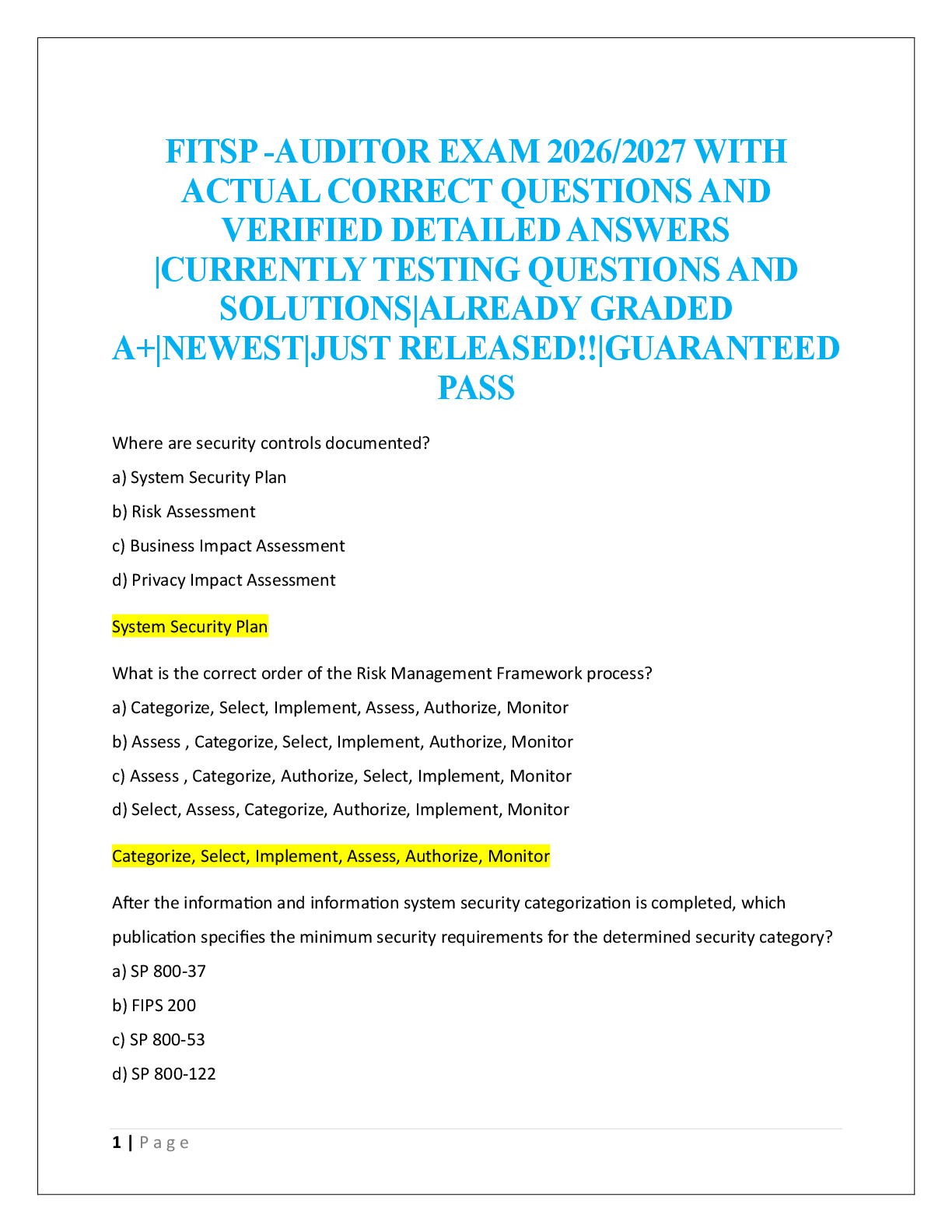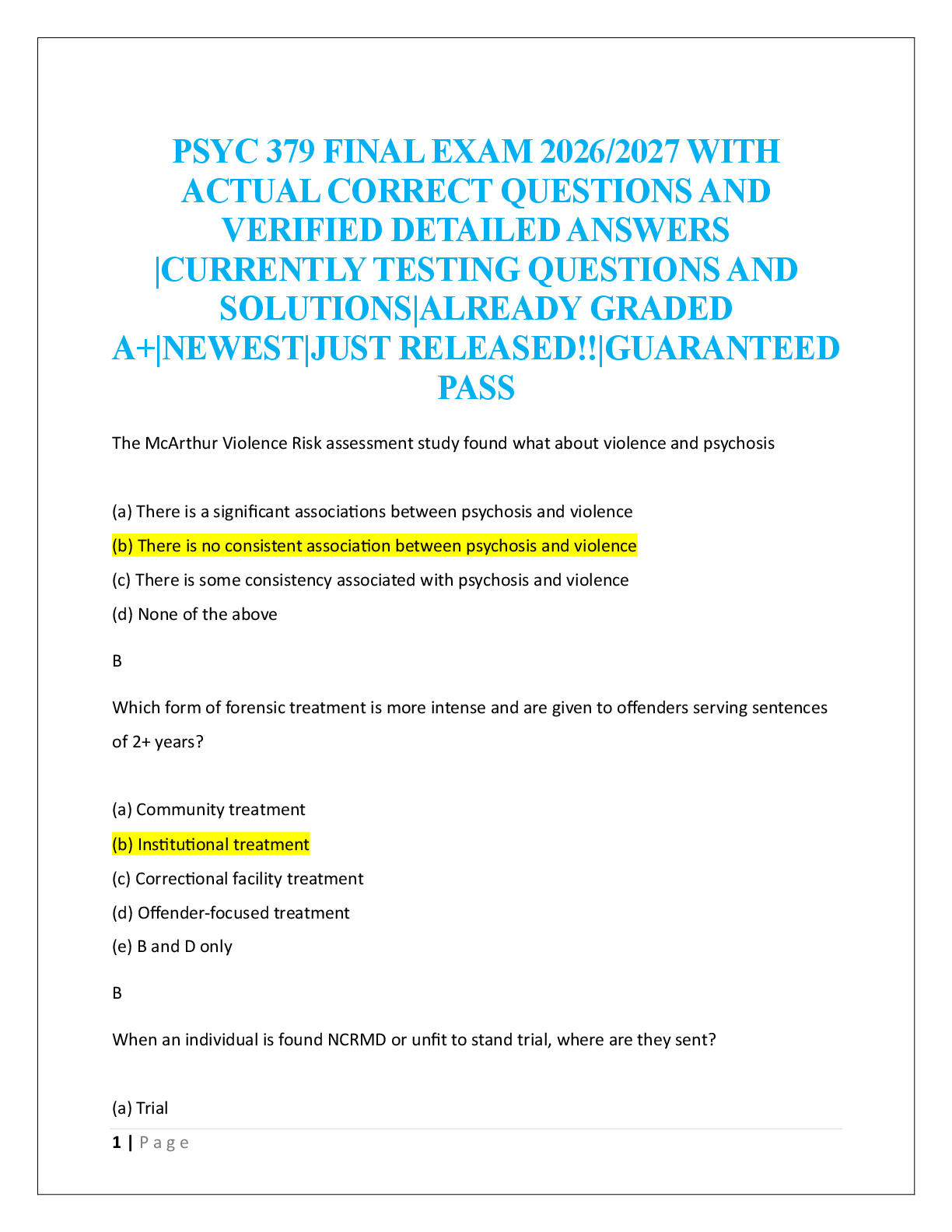Architecture > EXAM > SSC301 F1 QUESTIONS AND ANSWERS 100% CORRECT (All)
SSC301 F1 QUESTIONS AND ANSWERS 100% CORRECT
Document Content and Description Below
SSC 301-F1 B Correct Answer: 1. Information can be privately exchanged in informal venues and could be found to increase the possibility of concession to the other negotiator by reducing visibilit ... y to constituents in which of the following approaches? A) Establish "privacy" prior to the beginning of negotiations. B) Screen visibility during negotiations. C) Be aware of time pressure. D) Establish a reputation for cooperation. E) Communicate through superiors. B Correct Answer: 2. Incidences in cheating in the Boston Marathon included all but one motive. Which one was not identified as a motive for cheating in the race? A) Some cheaters were angry or disturbed. B) Some cheaters were seeking family approval. C) Some cheaters were middle-aged males. D) Some cheaters were after recognition. E) Some cheaters were simply "caught up in the moment." E Correct Answer: 3. Reputation is: A) a perceptual identity. B) reflective of the combination of personal characteristics. C) demonstrated behavior. D) intended images preserved over time. E) all of the above statements define reputation. A Correct Answer: 4. The norm of reciprocity A) suggests that when we receive something from another person we should respond in the future with a favor for them. B) plays only a nominal role in negotiations. C) applies only to favors of the same size. D) is prevalent only in Western culture. E) None of the above statements describe the norm of reciprocity. D Correct Answer: 5. In group-oriented cultures A) the individual comes before the group's needs. B) decisions are primarily made by senior executives. C) decision making is an efficient, streamlined process. D) negotiators may be faced with a series of discussions over the same issues and materials with many different people. E) All of the above occur in group-oriented cultures. A Correct Answer: 6. Schneider suggests what options for handling offensive behavior? A. ignoring it, confronting it, deflecting it, engaging it B. ignoring it, manipulating it, responding in kind, engaging it C. manipulating it, confronting it, responding in kind, engaging it D. confronting it, deflecting it, responding in kind, engaging it E. Schneider suggests none of the above options for handling offensive behavior. C Correct Answer: 7. In Esser and Marriott's research study, which type of mediation was found to be the most effective? A) issue identification B) positive framing of the issues C) content mediation D) mediated arbitration E Correct Answer: 8. Questions can be used to A) manage difficult or stalled negotiations. B) pry or lever a negotiation out of a breakdown or an apparent dead end. C) assist or force the other party to face up to the effects or consequences of their behaviors. D) collect and diagnose information. E) Questions can be used for all of the above. C Correct Answer: 9. Satisfaction with a negotiation is determined by A) the process through which an agreement is reached and the dollar value of concessions made by each party. B) the actual outcome obtained by the negotiation as compared to the initial bargaining positions of the negotiators. C) the process through which an agreement is reached and by the actual outcome obtained by the negotiation. D) the total dollar value of concessions made by each party. E) Satisfaction with a negotiation is determined by none of the above D Correct Answer: 10. Which of the following strategies can be used to manipulate the effect an audience can have? A) Limit one's own concessions by making negotiations invisible to the constituency. B) Do not allow the constituency to demonstrate their commitment to the bargaining position. C) Give the negotiator unlimited authority. D) Increase the possibility of concessions by cutting off visibility to audiences. E) None of the above tactics can be used to manipulate audience visibility. B Correct Answer: 11. Good distributive bargainers will A) begin negotiations with the other party with an opening offer close to their own resistance point. B) ensure that there is enough room in the bargaining range to make some concessions. C) accept an offer that is presented as a fait accompli. D) immediately identify the other party's target point. E) All of the above are actions that good distributive bargainers will take. C Correct Answer: 12. In brainstorming A) individuals work in a large group to select a single optimal solution. B) all solutions are judged and critiqued as they are recorded, and a weighted-average percentage is assigned to each solution. C) parties are urged to be spontaneous and even impractical. D) the success of the approach depends on the item-by-item evaluation and critique of the solutions as presented. E) None of the above is a part of the brainstorming process. C Correct Answer: 13. Getting to know the other party and understanding similarities and differences represents what key step in the negotiation process: A) preparation B) information gathering C) relationship building D) information using E) None of the above C Correct Answer: 14. The availability of information bias operates with which of the following statements? A) when negotiators sometimes maintain commitment to a course of action even when that commitment constitutes irrational behavior on their part. B) when thorough preparation, along with the use of a devil's advocate or reality check, can help prevent errors. C) when information that is presented in vivid, colorful, or attention-getting ways becomes easy to recall, and thus also becomes central and critical in evaluating events and options. D) when the tendency of negotiators to believe that their ability to be correct or accurate is greater than is actually true E) when the tendency will often lead to a self-fulfilling prophecy, as follows: People who expect to be treated in a distributive manner will (1) be more likely to perceive the other party's behavior as distributive, and (2) treat the other party in a more distributive manner D Correct Answer: 15. The concept of criticality in a communication network involves A) the degree to which the key individual can exercise discretion in how certain decisions are made or who gains access. B) how visible the task performance is to others in the organization. C) the amount of information that passes through a node, the number of transactions that occur through the node, or the degree to which the node is central to managing information. D) the essentiality of the information that flows through the no [Show More]
Last updated: 3 years ago
Preview 1 out of 12 pages
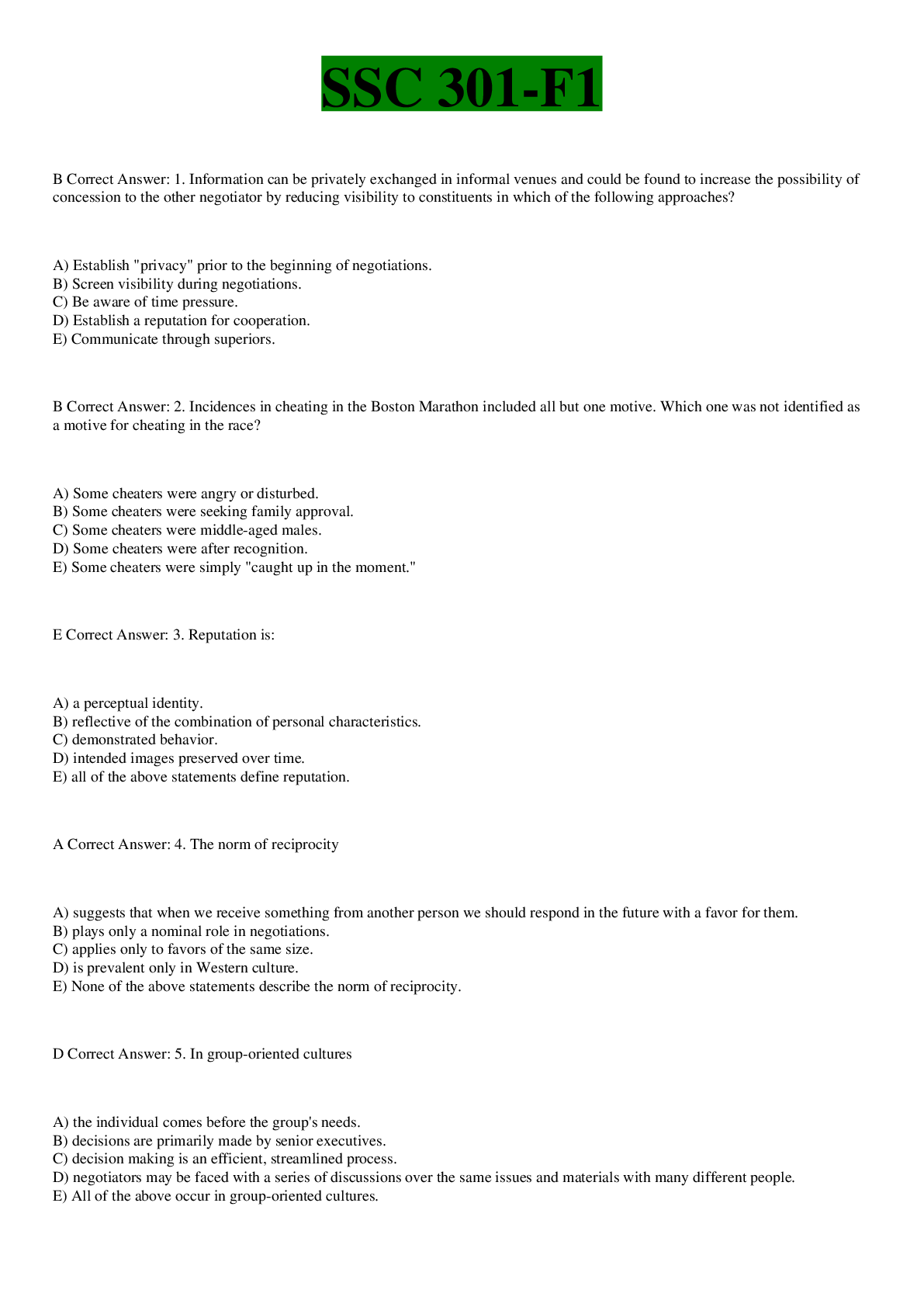
Buy this document to get the full access instantly
Instant Download Access after purchase
Buy NowInstant download
We Accept:

Reviews( 0 )
$12.00
Can't find what you want? Try our AI powered Search
Document information
Connected school, study & course
About the document
Uploaded On
Jul 12, 2022
Number of pages
12
Written in
All
Additional information
This document has been written for:
Uploaded
Jul 12, 2022
Downloads
0
Views
217












